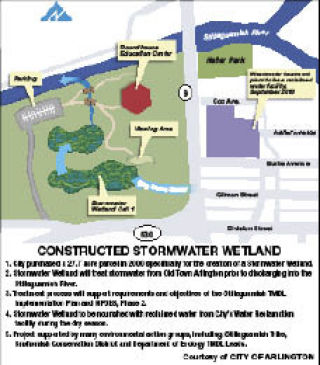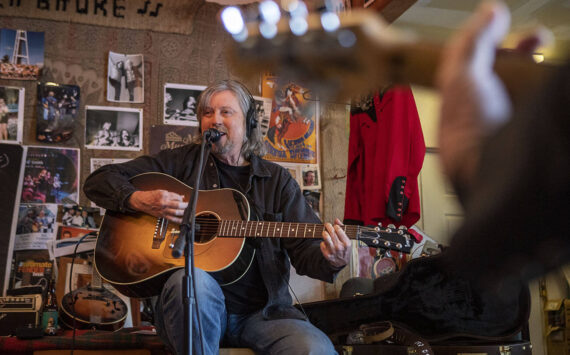ARLINGTON — Jim Kelly expects a constructed stormwater wetland will help the city of Arlington enhance the quality of water in the Stillaguamish River. It will also help meet the environmental and education efforts required by the state’s recently enacted stormwater program. The Washington State Department of Ecology is kicking in some funding to help the city out with the project.
The DOE has pledged approximately $520,000, under their Stormwater Management Implementation Grant Program, toward the construction of a stormwater wetland on a 27.7-acre parcel of property that was purchased in 2000, from Mary Jane Hammer and James L. Butler, earning it the name “the old Hammer property” among many in the community. The property is north of State Route 530 and west of Highway 9, on the bank of the Stillaguamish River.
Kelly credited the city of Arlington’s natural resources director, Bill Blake, with starting the project eight years ago, but noted that the project’s importance was re-evaluated after the DOE issued Phase II Municipal Stormwater Permits for Western Washington in January 2007.
“This constructed wetland will treat stormwater from Old Town Arlington before it discharges into the Stillaguamish River,” Kelly said. “We’ve already started work on this project.”
One completed step, the Cultural Resource Assessment required by Executive Order 05-05, yielded a seasonally appropriate surprise.
“While we were conducting the required cultural resource assessment, we found a privy on the site April 1,” Kelly laughed, “a real April Fool’s Day surprise.”
Blake explained that the Cultural Resource Assessment ensures that “due diligence” inspections are performed, out of respect for both the land and its former inhabitants.
“The Stillaguamish Tribe used this river and even had a village sited in this area,” Blake said. “We’re making sure no significant archeological artifacts were left behind here.”
In spite of their unexpected discovery, Kelly anticipates that periods of open public review and comment will be scheduled sometime soon.
Blake elaborated that the meetings, which have yet to be scheduled, will provide information on the stormwater wetland which will be constructed to complement the surrounding environment.
“This will be a wetland, not a gated-off concrete pond that will attract mosquitoes,” Blake said. Kelly promised that the constructed stormwater wetland will support the state’s objectives and requirements of both Phase II of the National Pollutant Discharge Elimination System and the Stillaguamish Total Maximum Daily Load Implementation Plan. He added that the wetland would be nourished with reclaimed water from the city’s water reclamation facility during dry seasons.
“We’re in negotiations with Landau Associates to assist us with the design of the wetland,” Kelly said. “They were working with the property eight years ago, so they’re familiar with the site. In addition to enhancing the quality of the Stillaguamish River, we’d like it to become a habitat for wildlife and an educational opportunity for the public, as a park with walking trails.”
Blake placed the constructed stormwater wetland in the context of the city of Arlington’s ongoing efforts to “Go Green,” which he described as attempting to correct mistakes made in the past.
“After 100 years of development, we need to restore forest conditions and provide aquatic species with an upland habitat again,” Blake said.








